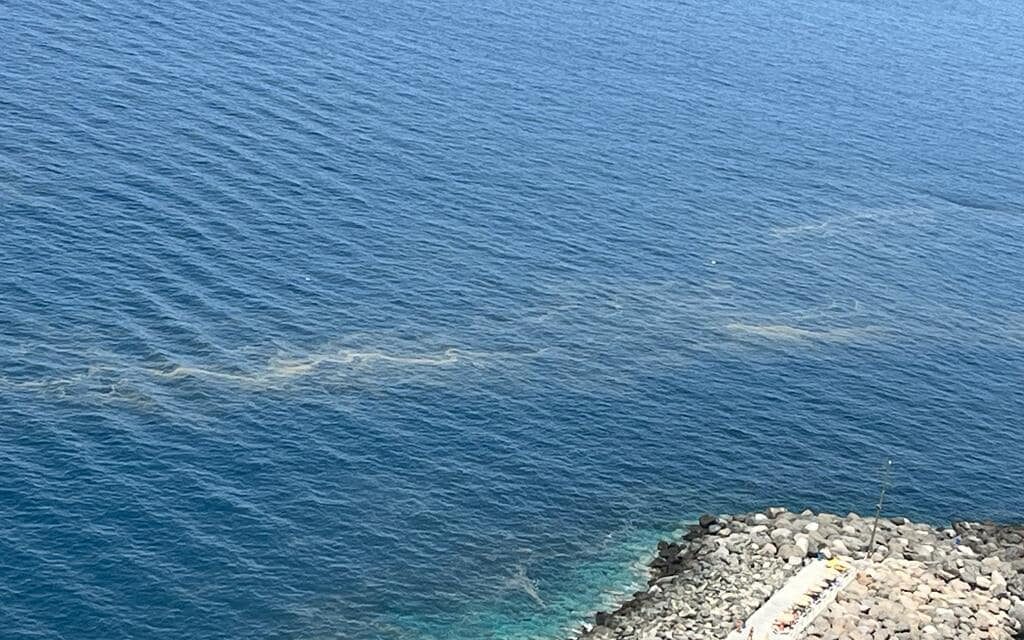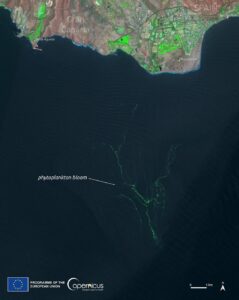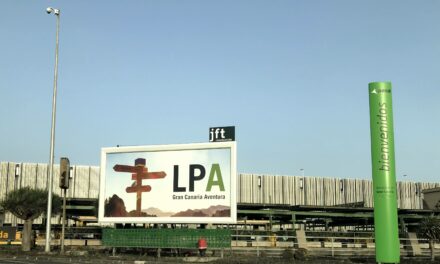This summer some Gran Canaria’s beaches, particularly Las Canteras in the capital and the coast of Mogán on the southwest of the island, have been affected by significant algal blooms. A team of experts from the University of Las Palmas de Gran Canaria, the Institute of Mathematical Sciences (Icmat), CSIC, and Digital Earth Solutions (DES) report that they have determined these blooms are likely to become more common over the years to come, due to the warming of the Atlantic Ocean in the Macaronesia region, a result of global warming.
These blooms, caused by cianobacterias known as Trichodesmium, have been observed over the summer this year, from June to September, in the coastal waters of Gran Canaria, as well as Tenerife, La Palma, La Gomera, and El Hierro. Experts warn that their visible presence may persist until October.
Trichodesmium cianobacterias are typical in subtropical and tropical areas where water temperatures exceed 23º Celsius. Their increased occurrence in Canary Island waters has been linked to the rising temperatures in the Atlantic Ocean.
While swimming is not recommended in waters where these algal blooms appear, their presence actually has positive environmental effects. They help sequester carbon dioxide, oxygenate the surrounding waters, and provide sustenance for the local food chain.
Professor Antonio González Ramos from Ecoaqua explains that these colonies appear on the surface when there is a calm sea, but disappear when the wind picks up, sinking and dispersing into their unicellular form. He emphasised that the Canary Islands’ population will need to learn to coexist with them.In terms of public safety, it may be necessary to temporarily prohibit swimming in affected areas, similar to measures taken for jellyfish blooms in coastal waters.
The study utilised high-resolution satellite images from the European Sentinel 2A and 2B satellites, part of the Copernicus environmental monitoring program. By analyzing these images, the team identified the presence of the cianobacteria in different environmental scenarios.
Their advanced mathematical model, developed by Icmat/CSIC, DES, and Ecoaqua, precisely predicts when and where the accumulations of cianobacterias will arrive on the coast up to 72 hours in advance.
The cianobacterias form large patches or filamentous lines, with their size depending on the coastal dynamics of each geographical point in the islands. The scientific team’s system can detect and predict their hourly evolution, including possible detachments and subdivisions from the original forms observed in satellite images.
So far, the massive arrival of cianobacterias has affected several beaches in the southeast and southwest of Gran Canaria. Reports have also indicated their presence in Las Canteras, Las Palmas de Gran Canaria, during periods of calm weather across the entire northern sector of the island.
On the western islands, they affected the southeast, south, and southwest of Tenerife, the east and south of El Hierro, the west of La Palma, and the entire south of La Gomera.
During August, various-sized patches were found, with some spanning tens of kilometres in the calm waters around the western islands. One specific report of Trichodesmium, located to the south of La Gomera and the east of El Hierro, covered an area of 100 square kilometers.
This methodology for predicting massive microalgae episodes has been previously tested and published in international journals by the same team of researchers as part of the H2020 IMPRESSIVE European project, which focused on reporting and tracking oil spills in port waters.
Trichodesmium sp is a prokaryotic phytoplanktonic species that “invented” normal photosynthesis 3.5 billion years ago, a process inherited by its eukaryotic descendants: microalgae, macroalgae, and higher marine plants. Like these descendants, Trichodesmium consumes Carbon Dioxide (CO2), produces Oxygen (O2), and feeds the rest of the marine trophic chain.
However, Trichodesmium has the unique characteristic of being “diazotrophic,” capable of fixing Nitrogen (N2) when Nitrate (NO3), a dissolved gas in water, is not available. This sets it apart from other unicellular or multicellular marine and terrestrial plants that rely on NO3.
In warmer waters, NO3 from deep waters doesn’t reach the surface, preventing the proliferation of other microalgae, macroalgae, or higher marine plants. When waters cool and mix with the deeper layers, NO3 reappears on the surface, allowing the reproduction of other marine vegetation and the subsequent sequestration of CO2 in the ocean, leading to the production of O2.
Questions still remain as to weather there are any probably connections between these algae blooms, and nitrogen from sewage dumped into coastal waters, as well as any possible connection to the large numbers of dead puffer fish that have been washing up on our shores in recent weeks.
No one seems to be able to adequately nor categorically explain if these are simply coincidences, or if there might be a deeper connection between them all happening at once.
None-the-less water the quality of our beaches is constantly monitored and reported on, with our coastal waters seen as some of the cleanest in the world, keeping them clean, and public safety, is paramount if we want to protect the marine environment, and indeed our economic engine fuelled by international tourism.
Understanding the truths of the matter and the various factors at play will allow us to confidently manage whatever situations come our way.














